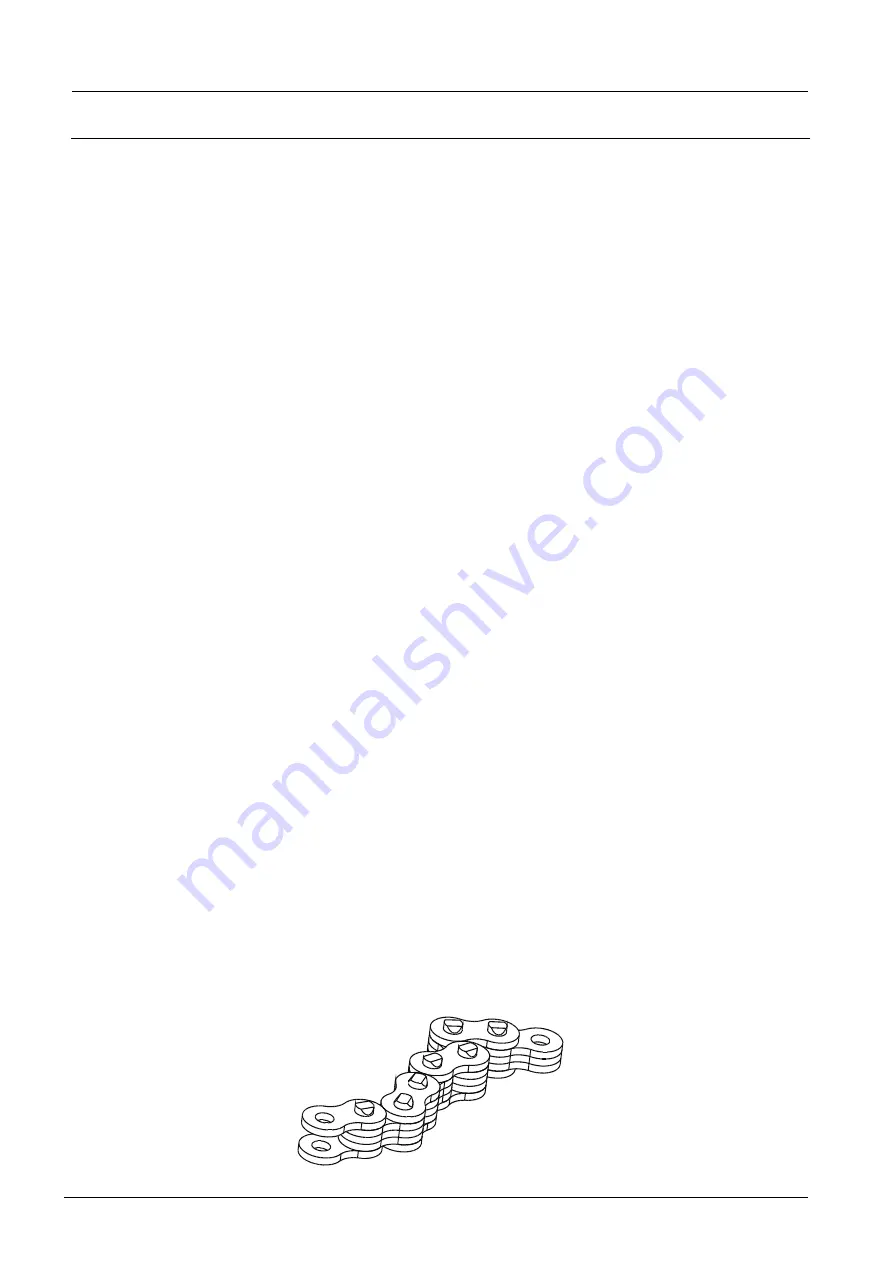
18 – 4
Repair manual
SWE100, 120, 120L, 120S, 140, 140L, 200D
© BT
Lift mast – 7000
Main lift chain system 7120
T code
Valid from serial no.
Date
Order no.
841×842×843
6061850-
2012-08-30
258946-120
18.3 Main lift chain system 7120
18.3.1 Checking the chain setting
The lifting chains must be adjusted at regular periods due to stretching;
see below. The chain is checked during servicing as set out in the
maintenance schedule.
Any adjustment is made with the chain mounting bolts.
Adjust the fork height according to C code 7100, 7420, 7700 and 7800
as applicable.
18.3.2 Chain inspection
The chains are exposed to two types of wear – outline wear and
stretching. Wear to the bolts and disc holes is caused by stretching.
The chains are also affected by the environment in which they are
used.
Noise
If there has been insufficient lubrication, there will be metallic friction on
the chain and this will result in noise.
The chain must be replaced.
Surface rust
Surface rust is easy to recognise as the chain will be reddish brown.
Deep-seated rust has generally started and the strength of the chain is
impaired.
The chain must be replaced.
Rusty links
Fretting corrosion results in a reddish-brown powder being visible by
the outer discs. It can also appear as if the chain is bleeding when
lubricated.
The chain must be replaced.
Stiff links
If it is not possible to pull out the chain to its normal position this can be
because of link rust or seizing.
https://www.besttruckmanuals.com/
















































